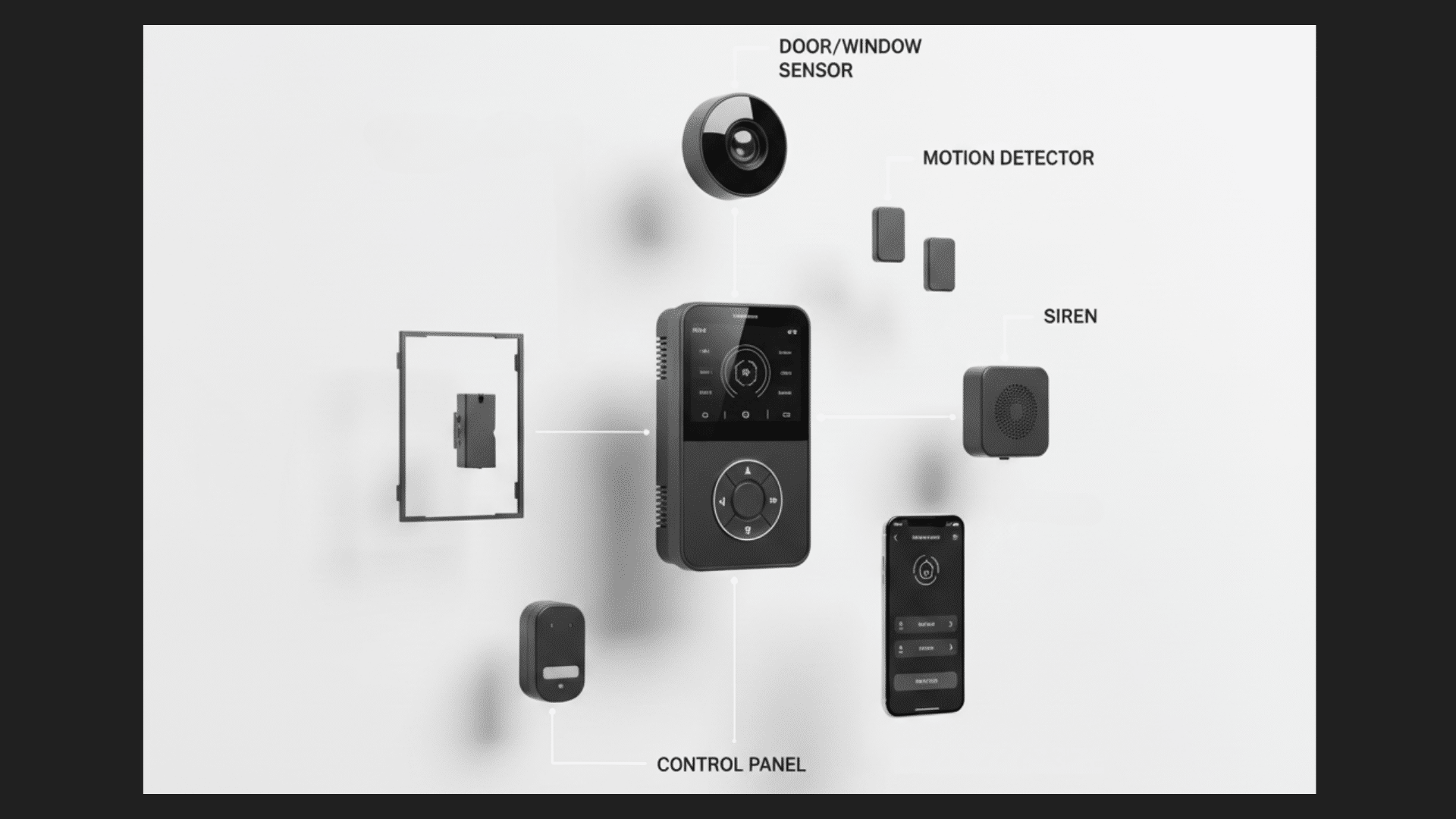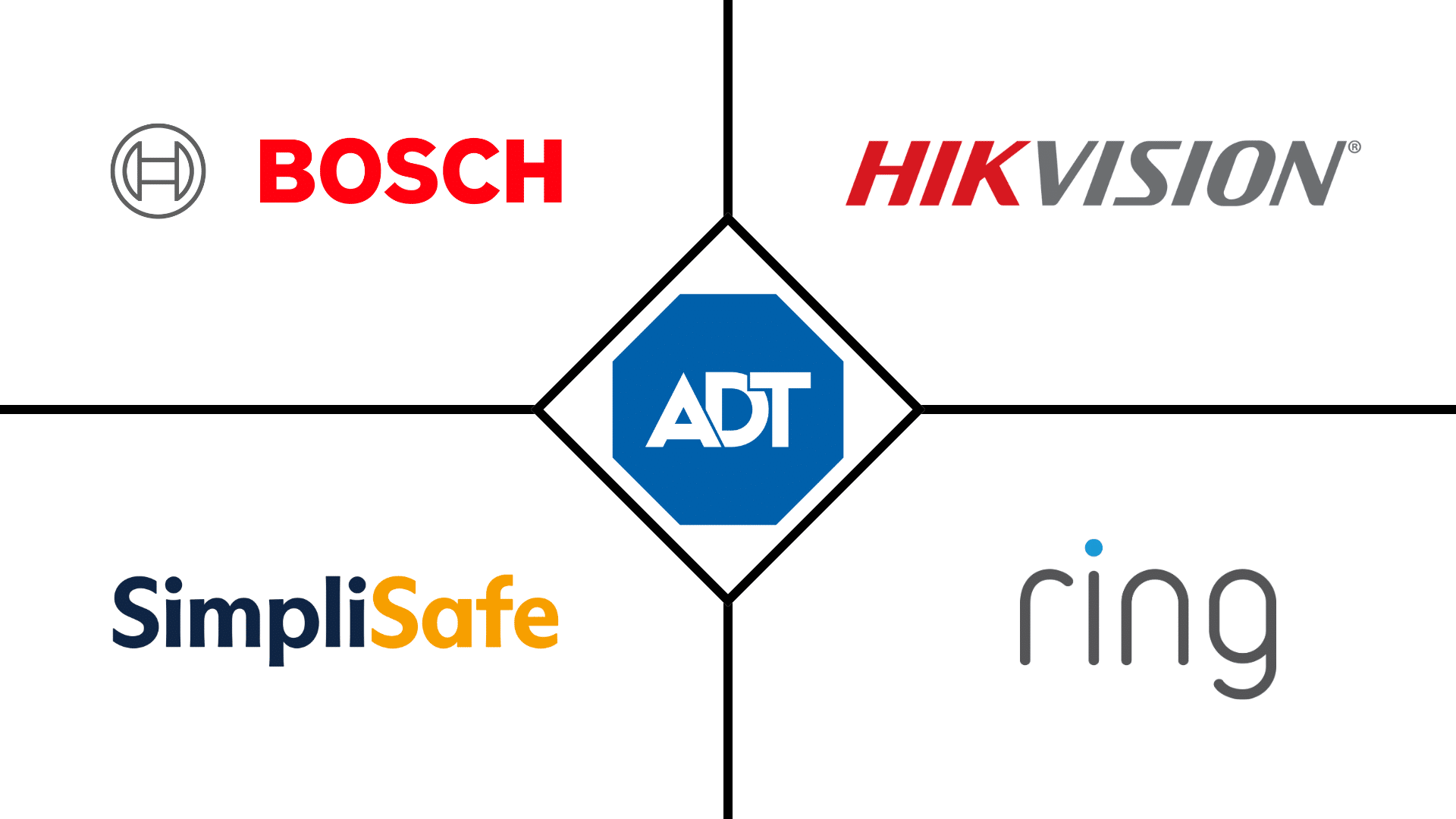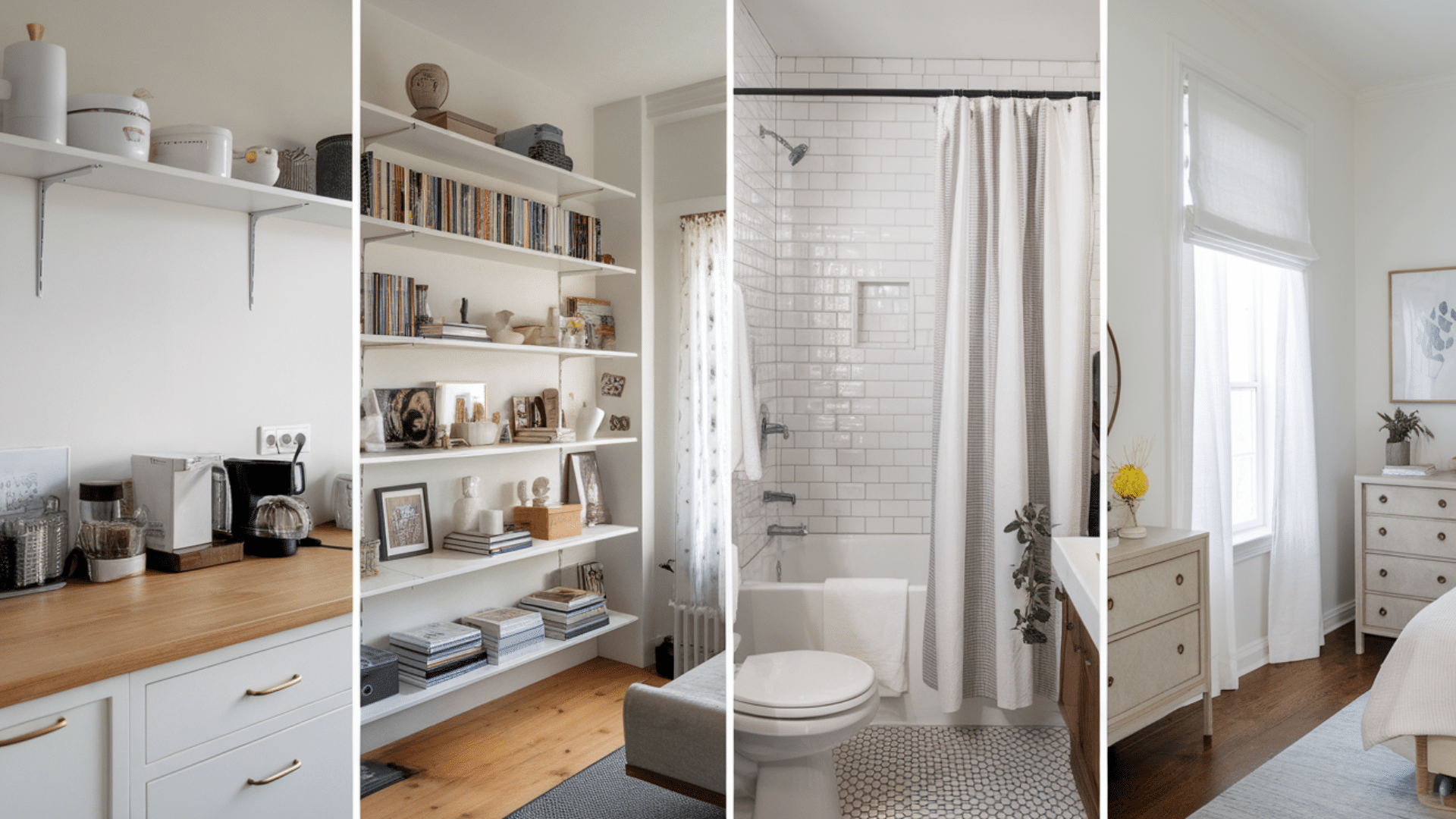Keeping your property safe is no longer about simple locks and keys. Today’s protection is smarter, faster, and always connected.
An intrusion alarm system gives you that extra layer of security, instantly alerting you when something isn’t right. But with so many options, from wired to wireless and AI-powered to self-monitored, choosing the right one can feel overwhelming.
Today, I’ll break down what makes them effective, and how to pick the setup that fits your space and lifestyle. You’ll also learn about top brands, setup tips, and how to keep your system running smoothly.
Let’s start by understanding how the system works.
How Intrusion Alarm Systems Work
An intrusion alarm system protects your home or business by detecting unauthorized entry and sending you an intruder alarm. It monitors doors, windows, and key areas for signs of intrusion.
These systems are more important than ever as break-ins rise. They help stop intrusions, reduce risk, and keep you informed even when you’re away.
Modern systems use AI to tell the difference between a pet, a person, or harmless movement. This reduces false alarms. You’ll also get mobile alerts in real time. If someone tries to enter, your phone notifies you instantly so you can check cameras, call for help, or respond right away.
AI and mobile alerts make today’s intrusion alarms smart, reliable, and always ready to protect.
How the System Detects and Responds to Intrusions
Here’s the basic process every intrusion alarm system follows:
Sensors detect movement → the signal goes to the control panel → the panel triggers alarms or sirens → the user gets notified.
Sometimes, cameras record what’s happening at the same time, helping confirm whether the alert is real. This quick chain of actions is what keeps your space protected and your system reliable.
What’s Inside an Alarm System: Components and Features

An intrusion alarm system is made up of several key parts that work together to detect, alert, and protect. Each component plays a specific role in keeping your home or business safe.
- Motion Detectors: Sense movement in monitored areas. They pick up any unusual motion and trigger an alert when someone enters where they shouldn’t.
- Door/Window Sensors: Detect when a door or window is opened, closed, or forced. They’re the first to notice an entry attempt.
- Control Panels and Keypads: Act as the brain of the system. They connect all devices, manage alerts, and let you arm or disarm the system easily.
- Sirens and Strobe Lights: Sound loud alarms and flash bright lights to scare off intruders and alert anyone nearby.
- Connectivity (Cellular, Broadband, Cloud): Sends alerts through different networks. Cellular works even if Wi-Fi is down, while cloud systems allow remote monitoring through apps.
- Integration with Smart Assistants (Alexa, Google Home): Lets you control your alarm with your voice, check status updates, and connect it with other smart devices for full automation.
Together, these components form a smart, connected system that spots danger fast and keeps you in control from anywhere.
Types of Intrusion Alarm Systems
You’ve got a few clear paths here. I’ll walk you through each one so you can match the system to your space and budget.
- Perimeter Systems: Designed to guard the outer boundary of your property, like doors, windows, gates, or fences. They detect movement or forced entry before anyone gets inside, giving you early warning and time to react.
- Internal Systems: Focus on what happens inside your home or building. These systems detect movement in rooms, hallways, or restricted zones after an intruder has entered, making them ideal for catching someone already inside.
- Wired Systems: Use physical cables to connect all sensors and devices to the control panel. They’re known for reliability and minimal interference, often used in permanent setups or larger commercial buildings.
- Wireless Systems: Operate through radio signals or Wi-Fi instead of cables. They’re quick to install, easy to expand, and great for places where wiring isn’t practical — like rental homes or older buildings.
- Monitored Systems: Connected to a professional monitoring center that watches for alerts around the clock. If an alarm goes off, trained staff verify the threat and contact you or emergency services right away.
- Self-Monitored Systems: Let you take charge of your own security. When an alarm is triggered, you get instant alerts on your phone, allowing you to check cameras or call for help from wherever you are.
- Smart (IoT-Based) Systems: Use internet-connected sensors, cameras, and apps to give you complete control from your phone or voice assistant. They can integrate with other smart devices for features like AI detection, remote access, and automation.
Choosing the System That Works for You
| Type | Pros | Cons | Best For |
|---|---|---|---|
| Perimeter Systems | Early detection before entry. | False alarms from weather or animals. | Large homes, offices, outdoor areas. |
| Internal Systems | Accurate detection, fewer false alarms. | Only triggers after entry. | Small homes, apartments. |
| Wired Systems | Reliable, no battery issues, secure. | Hard to install, not flexible. | New builds, permanent setups. |
| Wireless Systems | Easy install, portable, smart-ready. | Needs batteries, possible interference. | Rentals, older homes. |
| Monitored Systems | 24/7 response, fast emergency help. | Monthly fees, less privacy. | Businesses, high-risk sites. |
| Self-Monitored Systems | No fees, full control via app. | You handle alerts yourself. | Small homes, tech users. |
| Smart (IoT) Systems | Remote control, AI detection, automation. | Needs internet, higher cost. | Modern smart homes. |
Each system has its own strengths. The right choice depends on your property type, budget, and how much involvement you want in managing your security.
Top Intrusion Alarm Brands to Know

Bosch: Known for durable, industrial-grade systems built for reliability. Their alarms use advanced motion and glass-break sensors, making them a solid choice for large homes, offices, or commercial properties that need strong protection.
SimpliSafe: Perfect for easy, do-it-yourself setup. It’s affordable, flexible, and works well for self-monitoring or optional professional plans. Great for homeowners who want a no-hassle system without contracts.
Ring: Focused on smart home security. It connects seamlessly with Alexa and mobile apps, letting you control everything from your phone. Ideal for modern homes and tech-savvy users who prefer app-based control.
Hikvision: Offers advanced technology with AI, video verification, and hybrid options. It’s designed for those who want high accuracy, fewer false alarms, and strong integration with CCTV systems.
ADT: One of the most established names in home and business security. Known for 24/7 professional monitoring, reliable service, and expert installation. Best suited for users who want full-service, worry-free protection.
Key Features to Look For
Once you’ve checked out brands, here are the key factors you’ll want to evaluate:
- Property Size & Coverage: Bigger spaces need more sensors and maybe both perimeter and internal protection.
- Wired vs. Wireless: Wired systems are reliable but harder to install; wireless ones are easier and more flexible.
- Monitoring Type: Decide between professional 24/7 monitoring and self-monitoring via your phone.
- Connectivity & Smart Features: Look for cellular or backup connection and smart integration (apps, voice assistants).
- Budget & Total Cost: Consider not just the equipment cost, but installation, monitoring fees, and future upgrades.
Typical Cost Breakdown
Here’s a rough guide to how much you might spend:
- Basic DIY Kits: Around $100 to $250. Good for smaller homes or simple setups.
- Smart Home Systems: Typically $250 to $500. Adds app control, AI features, and advanced sensors.
- Monitored Plans: Usually $30 to $60 per month for continuous professional monitoring.
Installation and Setup of Intrusion Systems

Getting your intrusion alarm system up and running is easier than you might think. The key is deciding whether you want to do it yourself or have a professional handle it. Here’s what to know before you start:
DIY Installation: Most modern systems, like SimpliSafe or Ring, are designed for easy setup. You can peel-and-stick sensors, connect to Wi-Fi, and use an app to finish installation in under an hour. It’s cheaper and gives you full control, but you’ll need to troubleshoot any issues yourself.
Professional Installation: Brands like ADT or Bosch offer expert setup. A technician ensures everything’s properly wired, tested, and connected to monitoring services. It’s ideal for larger systems or commercial spaces, though it costs more upfront.
Step-by-Step Setup Guide
Here’s a simple process that works for most systems:
-
Plan Your Layout: Decide where to place sensors, motion detectors, and the control panel. Focus on entry points and main walkways.
-
Install Sensors: Mount door and window sensors securely. For motion detectors, place them in corners for wider coverage.
-
Set Up the Control Panel: Connect it to power and your home Wi-Fi or cellular network. Follow the app or manual prompts.
-
Link Additional Devices: Add cameras, sirens, or smart assistants if supported.
-
Customize Settings: Use the app or keypad to name devices, set zones, and adjust sensitivity levels.
Take your time testing each step before moving on. It ensures the system runs smoothly from day one.
How to Test Your System
After installation, always do a quick test to make sure everything works:
- Arm the system and trigger each sensor one by one.
- Check that the control panel responds and sends alerts.
- Listen for the alarm and confirm mobile or monitoring notifications.
If available, watch the video or the infographic guide that came with your system; they visually walk you through testing and troubleshooting.
Once everything checks out, your system is ready. From there, regular monthly tests will help you stay confident that your alarm is always ready when it counts.
Common Problems and How to Fix Them
- False Alarms: Often caused by loose sensors or overly sensitive motion detectors. Tighten sensor mounts and adjust sensitivity levels in your app or control panel.
- No Alerts or Notifications: Check your Wi-Fi or cellular connection. If it’s stable, restart the control panel or app.
- Low Battery Warnings: Replace batteries right away to avoid sensor failures. Most systems will alert you before they run out.
- Unresponsive Sensors: Try resetting the sensor or re-pairing it to the control panel. Dust or obstruction can also cause signal issues.
- App Not Updating: Log out and back in, or update the app. If the problem continues, check for firmware updates on your system.
Even the best systems can have small hiccups. Most issues are quick fixes. Start simple before calling for service.
Maintenance and Troubleshooting
Keeping your intrusion alarm system in good shape doesn’t take much; just a little routine care and quick checks now and then.
How to Update Software and Replace Batteries
Software Updates: Check your system’s app or settings menu monthly. If there’s a new firmware update, install it immediately to fix bugs and strengthen protection.
Battery Replacements: Replace sensor and detector batteries every 6–12 months, or as soon as you get a low-battery alert. Always use the type recommended by your manufacturer.
Keeping your software and batteries up to date helps prevent most system failures before they start.
Best Practices for Regular System Checks
- Arm your system and trigger a few sensors to see if alerts come through.
- Make sure sirens, cameras, and notifications all respond correctly.
- Inspect sensor placement and check for dust, damage, or loose fittings.
- Review your app settings. Sometimes updates can reset preferences.
Routine checks take just a few minutes and go a long way in keeping your alarm system reliable when you need it most.
Wrapping Up
An intrusion alarm system today is smarter, faster, and more reliable than ever.
AI helps reduce false alarms, cloud monitoring gives you full control from anywhere, and stronger cybersecurity keeps your data secure.
These upgrades prove that modern alarms don’t just react to threats; they help prevent them.
The key is finding a system that fits your space and lifestyle while keeping up with new technology. With regular testing, timely updates, and the right setup, your home or business stays protected for years to come.
Take the next step toward smarter protection. Explore trusted brands, compare your options, and choose the intrusion alarm system that brings you lasting peace of mind.















